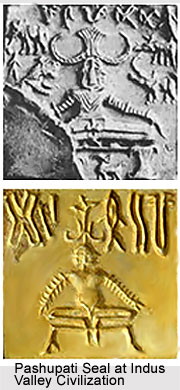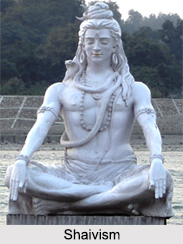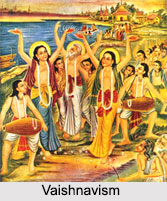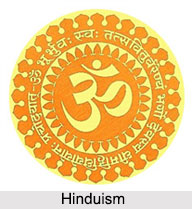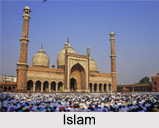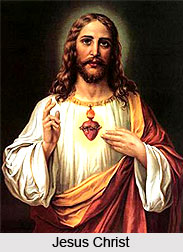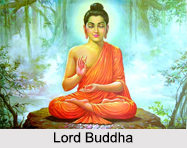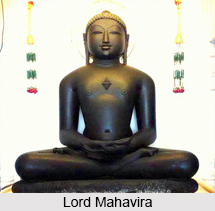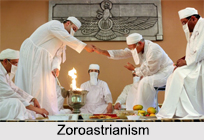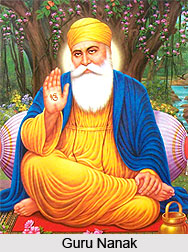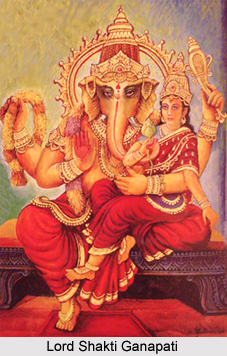 Shakti Ganapati, meaning the powerful one, is one of the forms of Lord Ganesha. The Lord has a reddish-brown complexion and is depicted with four arms in this form. He carries different articles in His hands like a garland of flowers and a noose. His main hands display yoga mudras, namely Abhaya Mudra and Varada Mudra. The Shakti Ganapati incarnation of Ganesha is a Tantric form of the Lord. He is accompanied by Goddess Shakti who is depicted with the colour green. The goddess is seated on the left knee of the elephant-headed deity
Shakti Ganapati, meaning the powerful one, is one of the forms of Lord Ganesha. The Lord has a reddish-brown complexion and is depicted with four arms in this form. He carries different articles in His hands like a garland of flowers and a noose. His main hands display yoga mudras, namely Abhaya Mudra and Varada Mudra. The Shakti Ganapati incarnation of Ganesha is a Tantric form of the Lord. He is accompanied by Goddess Shakti who is depicted with the colour green. The goddess is seated on the left knee of the elephant-headed deity
The form of Shakti Ganapati or Shakti Ganapathy represents the element of Akash (Space). It is believed that when a devotee worships Lord Ganesha in this form, he can gain control over the five senses of human body. The person is blessed with improved concentration so that he can achieve his aims without any difficulty. Shakti Ganesha is regarded as the protector of the homeowners and landlords. The Lord brings peace to a home and removes all negative elements.
The Thiruparankundram Temple in Madurai, Tamil Nadu is one of the most popular temples of Lord Shakti Ganapati. Moreover, the Ganesha temples in Nanjangud and Chamarajanagar in Mysore, Karnataka also worship this form of the Lord.
The Shakti Ganapati Mantra is recited by the devotees in adoration of Lord Shakti Ganapati. The devotional hymn is mentioned as follows-
Alingya Deveem Haritandgyashtim
Parasparakshlishta Katipradesham
Sandhyarunam Pashasni Vahantham
Bhayapaham Shakti Ganeshameede.
This article is a stub. You may enrich it by adding more information to it. You can send your write-up at content@indianetzone.com
